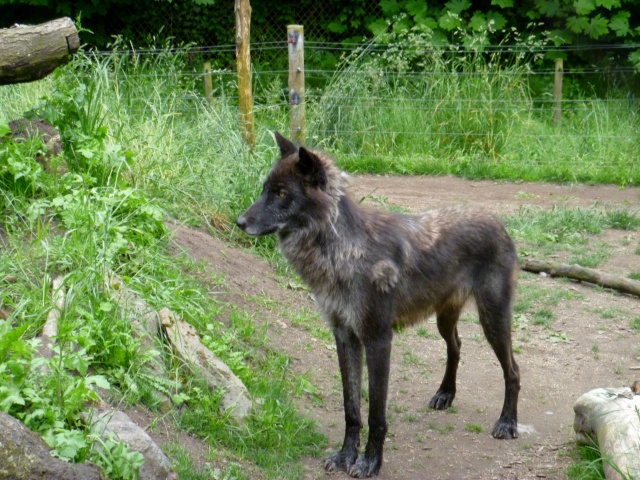
So! Between my online statistics class and petsitting, I will be a busy busy bee for the rest of April. But I shall do my best to post science! Even if it is the science of statistics.
For now, check out this melanistic wolf. Melanism is the result of an abundance of dark pigment (melanin) in the skin, hair, feathers, scales or fur. Dark colors can be very adaptive and help animals hide from predators or prey, but in certain environments they’re highly detrimental to survival. Plunk this pup in the arctic and see how much food he catches. Conversely, an albino animal does great in the arctic snow. Albinism is the absence of any pigment in the skin. This is often highly detrimental because you’ll stand out even in shadow. Certain animals have evolved to be semi-albino (their skin can produce melanin, it just won’t) in the winter and melanistic in the summer. A lot of the animals that do this are actually arctic animals. Since winter camouflage is so important to survival but retaining that through the summer is such a problem, they evolved to switch coats seasonally. People do this too, but it’s usually a wool to cotton kind of change.
Anyway, if you’re not an albino, even if you’re fish-belly pale like me, you have a little melanin in your skin. More is released from melanocytes (melanin producing cells in the skin) when you’re out in the sun. This prevents UV damage and results in a nice golden tan. Unless you’re me, then nothing happens except a growing conviction you’re descended from highly sun-resistant vampires.
